News & Stories
Catch More Opening Day Walleyes!
Posted by director on April 15, 2019
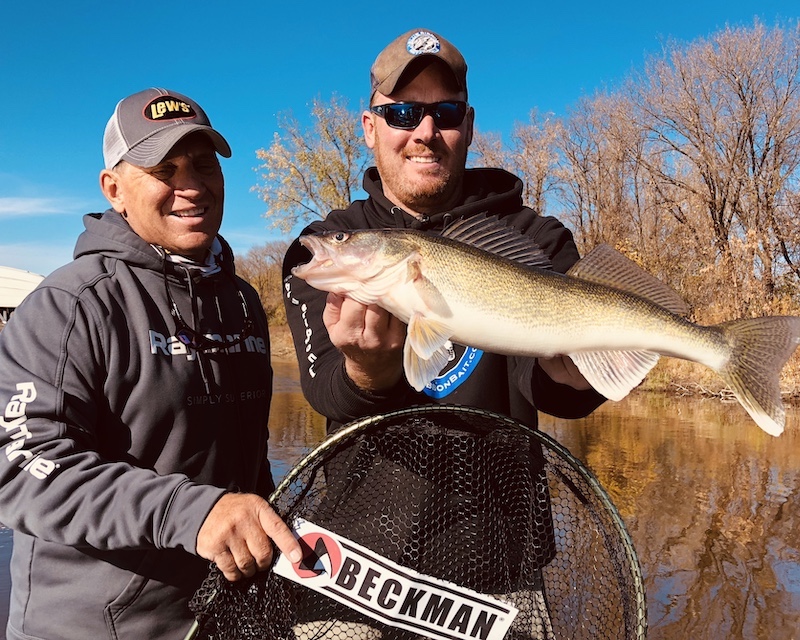
By Mike Frisch
If you are a walleye angler like me, the opening day of Minnesota’s gamefish season, aka “the walleye opener,” is one of the year’s most-anticipated days! With that day just about here, having a good opening day/early season plan can mean the difference between spring fishing success and frustration.
Opening day success is often as much about choosing the “right lake” as it is about anything else. Because warm water usually means active early season walleyes, I like to start on a small, shallow lake. These lakes often have some “color” to their waters which, when combined with their shallow depths, often means warmer water.
When choosing a specific lake, I often consider a couple key factors. First, lakes that had good walleye bites last winter are often on the “uptick” when it comes to walleye populations and, I like tipping the odds for fishing success in my favor by targeting lakes with lots of fish.
Second, lakes that are traditional producers of early season walleyes will also get consideration. Some lakes just seem to be good fish-producers year-in and year-out during early season and, if those same lake’s produced last winter, all the better!
I usually start my early season search along the lake’s first drop-off where the shoreline flat drops into deeper water. Differences or irregularities along that edge, maybe small areas of emerging weeds, points or turns on the drop-off, or areas with harder bottom are spots that often congregate baitfish drawing in hungry spring walleyes.
If these shoreline drop-off irregularity areas are adjacent to incoming rivers or creeks, even better. These inlets often have warmer water, drawing baitfish and spring walleyes too.
Doing some “sonar search” before fishing often pays early season dividends. I’ll quickly cruise along a drop-off with an eye on my sonar unit. The new Raymarine Element units I’m running this year are super-easy to use and feature HyperVision sonar for superior detail for finding structure, baitfish, and fish. Using sonar to cruise likely fish-holding areas for the presence of bait, structure, and walleyes before fishing is a great way to get on fish fast during opening day, and during the balance of the fishing season too!
(DownVision view of HyperVision - hover/click to learn more)
When potential spots are found, jigs and minnow combinations often rule during early season. I prefer small jigs in the 1/16- to 1/8-ounce size range for pitching or slowly trolling/drifting. Often the early season fish I find are in waters from 7-10-feet deep, and I prefer to slowly troll or drift through likely areas with the bait fished a ways back behind the boat. In shallower situations, holding the boat away and pitching to the fish works.
The traditional Fire-Ball and Stand-Up Fire-Ball jigs in bright colors get lots of play in my boat during early season. This year, these jigs are also available in several new UV-color patterns that will be top producers in off-color waters.
I had a chance to sample some of the new UV Fire-Balls last fall and can say they definitely upped our catches in dingy waters!
Spot-tail shiner minnows are the bait of choice on lakes with good populations of those minnows, though fatheads work just as well on lots of small, shallow lakes.
Walleye season is here and it’s time to break out the jigs and minnows and head to your favorite lake. Good luck on the opener and remember to include a youngster in your next outdoors adventure!
PHOTO – Mike Frisch and fishing guide Josh Stevenson with a walleye caught on a UV Fire-Ball Jig.
Mike Frisch hosts the popular Fishing the Midwest TV series. Visit Fishing the Midwest’s new website www.fishingthemidwest.com to learn more!
You Only Need One Fishing Rod!
Posted by director on April 13, 2019
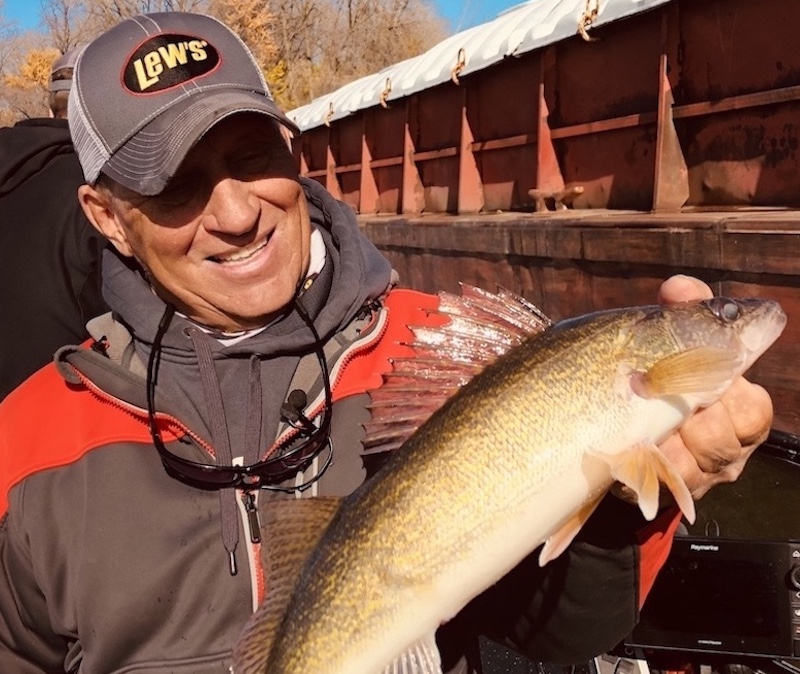
By Mike Frisch
You’re probably saying “no way” to the title of this story! And, you are right, no one fishing rod can do it all, particularly if you are a multi-species, multi-technique angler. However, if you fish panfish, walleyes, and bass like I do, there is one rod and reel combination that can do lots!
A 6’6” to 7’-foot medium-light, fast action spinning rod and reel spooled with braided line is a very versatile combination that gets a great deal of use in my boat.
For example, several of these rod/reel combinations will have jigs tied on them for early season walleye fishing. This is the perfect combination for presenting small jigs and minnows to hungry spring walleyes that are usually found in shallow water. These rods are light, sensitive, and with the right tip action for effectively presenting jigs and minnows.
And, if the walleye bite is tough on a particular spring day, this same combination can be used to transition to a bobber and even smaller jig set-up for panfish. Some days the walleyes might be off, but that same day might be perfect for heading to the shallows to find hungry crappies and bluegills, and this rod/reel will do a good job there too.
This versatile combination isn’t just for spring walleyes and panfish, however. Summer largemouth bass often head to the deep weedline and will readily bite a small jig and plastic worm offering. Often referred to as shaky-head, jigworm, and now Ned rigging, the versatile jig/plastic worm is a good summer fish producer and can be fished successfully with the same rod and reel combination.
If smallmouth bass are your target species, you guessed it, this same rod and reel combination has a place. Smallies are often susceptible to drop-shot rigs during most seasons and this same combination does a great job dropping on smallmouth too.
While the same rod/reel combination spooled with braided line can be used for these various species and techniques, the difference is in the leader that I tie to the braid. I spool the mainline on the reel with 10-pound XTCB-8 braid which is a small diameter, smooth braid that is also very strong.
During spring when walleyes and panfish are targeted, I tie several feet of 6-pound Floroclear line which is a fluorocarbon coated line that does a great job as a leader for presenting small finesse baits to walleyes and panfish. If I were only chasing panfish, I would opt for a 4-pound leader, though 6-pound is a good all-around choice when walleyes and panfish might both be in the mix.
When bass (regardless the species) are targeted, I tie my leader with 8-pound Tactical fluorocarbon for a bit more strength around weeds and rocks.
Various braid to fluorocarbon knots can be used to tie leaders, with the FG-knot (I learned via internet videos) being my favorite.
The specific rod and reel that have quickly become my favorites are new for 2019 from Lew’s, ones I had a chance to sample last fall with excellent results on several outings.
The rod is the 6’9” “finesse” model from the new TP1 Black Speed Stick series. This rod series features the Vibration Transfer Ring which gives the angler direct contact to the rod blank for maximum sensitivity. Plus, the finesse model has the perfect combination of action and power for effectively presenting light baits.
(However/click on the images to learn more)
I paired it with the new Custom Pro Speed Spin reel with its silky smooth drag that works great for protecting light line while battling hard-fighting bass and walleyes.
Not only is this rod and reel combination very versatile, but they come at price points that will fit into lots of anglers’ budgets as well.
Equipment that fits into an angler’s budget is important, especially equipment that can do multiple jobs. The versatile rod and reel combination discussed here may not be the only combo you need, but it is one that deserves a place in most rod lockers.
As always, good luck on the water and remember to include a youngster in your next outdoors adventure!
Mike Frisch hosts the popular Fishing the Midwest TV series. Visit Fishing the Midwest’s new website www.fishingthemidwest.com to learn more!
PHOTO – The author caught this walleye last fall using the versatile rod and reel combination detailed in this story.
Walleys On Jigs
Posted by admin on April 1, 2019

by Bob Jensen
Many walleye anglers consider early spring to be their favorite time of year to chase their favorite fish. Rivers across walleye country, and many lakes and reservoirs in the same region, are seeing lots of anglers after walleyes. There are some states or areas where walleye season is closed, but there are plenty of places where we can get after walleyes right now. And, for many of those anglers, walleye fishing right now means jig fishing. Here are some ideas for catching walleyes on jigs during the next few weeks.
Walleyes can be caught using a lot of different bait types, and most walleye anglers take most of those bait types with them when they go fishing. But in the early part of the season, you’re probably going to do okay if you just take your jig box, and in many places you’ll only need sixteenth and eighth ounce jigs. Not everywhere, but in many places.
Walleyes are getting ready to spawn. They’ll look for areas with a sand or rubble bottom. In lakes they’ll seek out light current areas, in rivers they’ll want to be in areas where the current isn’t too strong.
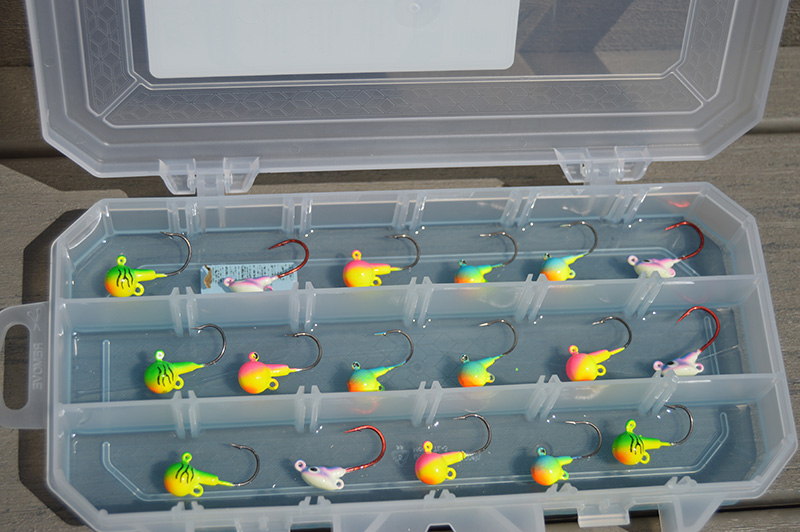
Many of the most successful walleye anglers will tie on a jig with a short shank and wide hook gap. Fire-ball Jigs are an outstanding example of this style jig. Walleyes prefer a smaller bait presentation this time of year, and with the Fire-ball you can provide that presentation. A minnow is usually the preferred addition to jigs for the first few weeks of walleye season. Put the hook in the minnow’s mouth and out the back of its head. By doing so, the minnow’s mouth will be right against the jig. This creates the image of a small presentation.
In water with light current that is less than five feet deep, go with the sixteenth ounce size. In heavier current or deeper water, size up to an eighth ounce. This time of year, in many lakes and rivers, the fish will be shallow. We take them frequently in water only two feet deep.
A slow presentation is usually best, and the lighter jigs allow for a slow presentation. If the fish are finicky, try fishing your jig under a slip-bobber. Under a slip-bobber, you can let the jig wiggle right there in the fish’s face, and a jig/minnow combo slowly wiggling can’t be resisted by a walleye very often.
The line that you use is an important consideration. There are a lot of options. Some anglers like to go traditional and fish with monofilament. Mono is not a bad choice. Consider 6 pound test CX P-Line. It’s really good with light jigs and stands up to rocks and other underwater obstructions well.
In the past number of years, more anglers have been using XTCB Braid in 15 pound test and then tying in a 6 or 8 pound test Tactical Fluorocarbon leader. The braid is super-sensitive and tough, and the fluorocarbon is invisible, so you get the best of 2 worlds. Snags can be an issue in some rivers, and with the braid you might save a few jigs.
Last thing: Go with a sensitive rod. Early season walleyes are often light-biters, and a sensitive rod will reveal more bites. I’m sure that the Lew’s Custom Speed Stick Walleye Special that I’ve been using has added to my walleye catch. Team it with a Speed Spin CS200 and you’re set.
However you like to fish, from a boat or in waders, walleyes are there to be caught right now. Maybe we’ll see you in or on the water.
PHOTO CAPTION #1-Here’s our fishing friend Bill Bunn with a jig-caught spring walleye from Clear Lake in north central Iowa. Clear Lake is an outstanding early season walleye lake.
PHOTO CAPTION #2-The author’s spring walleye jig box. The Lure Lock box with its sticky surface keeps the jigs easy to see and prevents spilling.
To see new and older episodes of Fishing the Midwest television, fishing articles and fishing video tips, visit fishingthemidwest.com


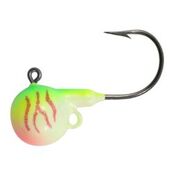
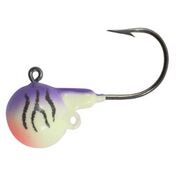
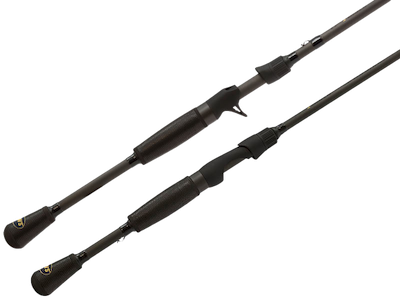
![custompro_1 converted[1].png](/archives22v5.com/files/2915/5521/7453/custompro_1_converted1.png)